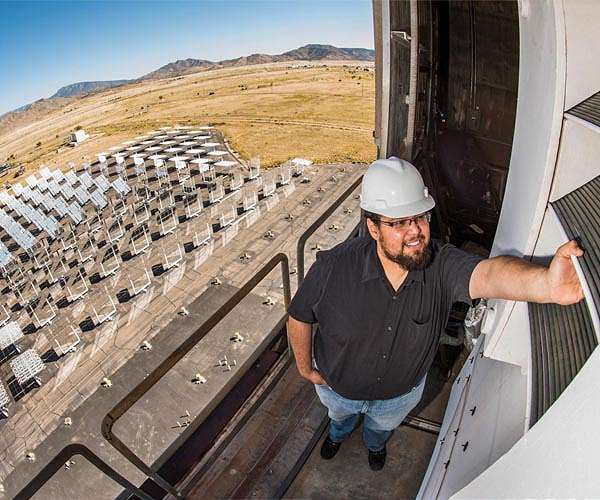Solar energy heats materials to more than 1,000 degrees Celsius
Researchers at ETH Zurich have developed a method to generate heat of more than 1,000 degrees Celsius using solar energy. This innovation could replace fossil fuels in energy-intensive industries such as steel and cement production. The study, published in the journal Device on May 15, uses synthetic quartz to capture solar energy, demonstrating the potential for clean energy in these industries.
“To tackle climate change, we need to decarbonize energy in general,” says Emiliano Casati of ETH Zurich. “People tend to think of electricity only as energy, but in fact about half of the energy is used in the form of heat.”
The production of glass, steel, cement and ceramics requires high temperatures, which are traditionally achieved through the combustion of fossil fuels. These industries are responsible for approximately 25% of global energy consumption. Researchers have explored using solar receivers to concentrate and build heat, but efficiently transferring solar energy above 1,000 degrees Celsius has been a challenge.
Casati’s team has improved the solar receivers using quartz, which captures sunlight through the thermal trap effect. They created a device using a synthetic quartz rod and an opaque silicon disk to absorb energy. When exposed to intense sunlight, the device’s absorber plate reached a temperature of 1050 degrees Celsius, while the other end of the quartz rod remained at 600 degrees Celsius.
“Previous research has only been able to demonstrate the thermal trap effect up to 170 degrees Celsius,” Casati said. “Our research showed that solar thermal energy works not only at low temperatures, but also well above 1,000 degrees Celsius. This is crucial to demonstrate its potential for real-world industrial applications.”
Using a heat transfer model, the team simulated the efficiency of the quartz under different conditions. The model showed that thermal trapping achieves target temperatures at lower concentrations with comparable performance or higher efficiency at equal concentrations. For example, a state-of-the-art receiver has an efficiency of 40% at 1,200 degrees Celsius with a concentration of 500 suns. A receiver shielded with 300 mm of quartz achieves an efficiency of 70% at the same temperature and concentration. The unshielded receiver requires at least 1,000 suns for comparable performance.
Casati’s team optimizes the thermal trapping effect and investigates new applications. They tested other materials, such as different liquids and gases, to reach even higher temperatures. The ability of these semi-transparent materials to absorb light or radiation is not limited to solar radiation.
“Energy issue is a cornerstone for the survival of our society,” Casati said. “Solar energy is readily available and the technology is already here. To really drive industry adoption, we need to demonstrate the economic viability and benefits of this technology at scale.”
Research report:Solar thermal insulation at 1000C and above


